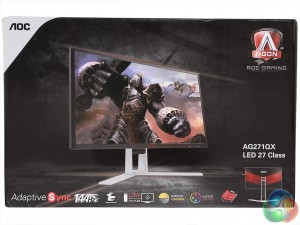
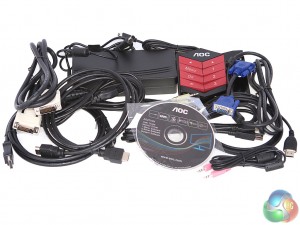
The AGON AG271QX includes an external power supply, plus cables for pretty much every connection: DisplayPort, HDMI, HDMI to MicroHDMI, plus even VGA and DVI. There are minijack cables to route line and microphone to the monitor, plus one for the USB 3.0 hub.
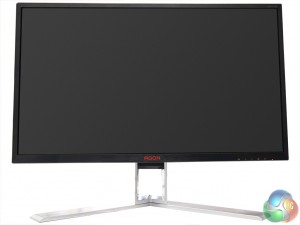
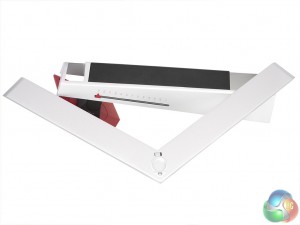
The AG271QX is a fairly sober black-bezelled screen with silver base. You have to screw the screen to the mount, rather than clipping it in. This provides a more secure attachment, but is inconvenient if you want to shift the screen to a LAN gaming event, or manage to lose the screws.
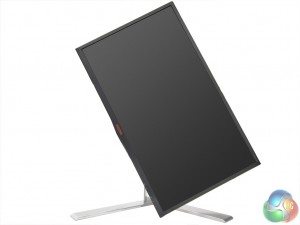
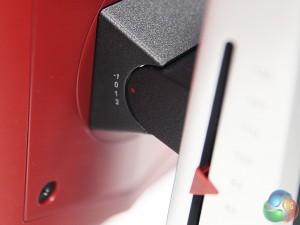
The screen swivels on its base by 20 degrees in each direction, can be tilted 3.5 degrees downwards or 21.5 degrees upwards. There is a 130mm range of height adjustment available, and the whole screen can also be rotated into portrait mode.
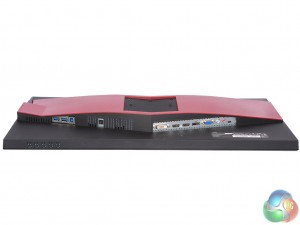
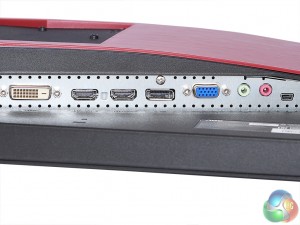
Somewhat unusually for this point in computing history, the AG271QX includes legacy VGA and DVI inputs alongside the usual array of contemporary digital connections. There are a couple of HDMI inputs plus a single DisplayPort 1.2. One of the HDMI ports also supports MHL, so you can connect a compatible phone directly, and the other supports HDMI 2.0.
A line input and microphone output allow you to route audio from your system through the screen. Then there's a mini-USB port for attaching a bundled external control peripheral called the Quick Switch, of which we will discuss more later.
It's always handy to have a USB 3.0 hub built into your screen. The AG271QX places the upstream port and two downstream ports on the rear. But there are also some connections placed more conveniently on the right-hand edge.
There are two USB 3.0 downstream ports, one of them supporting fast charge. There are two audio minijacks, one for headphone output or headphone output with combined microphone input. But there's also a separate microphone input, if your headphones require separate minijacks.
Another nice touch is the small arm that swings down to hang your headphones on. Many people hang their headphones on the corner edge of the screen, and this little feature caters for this very conveniently.
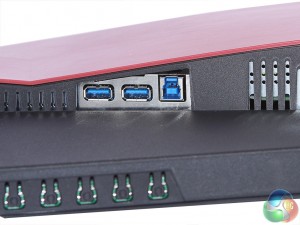
There is the usual array of buttons on the screen edge, in this case just underneath the right-hand lower corner. There are four control buttons plus the power button. But AOC has another trick up its sleeve with this particular screen.
The extra Quick Switch control keypad certainly makes operating the OSD a whole lot easier. Aside from the arrows moving you around the menu, there is a menu button itself, and OK and back buttons. Also present are three numbered buttons which allow for immediate recall of the user-configurable Gamer settings, which we will discuss in more detail in our analysis of the OSD in the next section.
 KitGuru KitGuru.net – Tech News | Hardware News | Hardware Reviews | IOS | Mobile | Gaming | Graphics Cards
KitGuru KitGuru.net – Tech News | Hardware News | Hardware Reviews | IOS | Mobile | Gaming | Graphics Cards


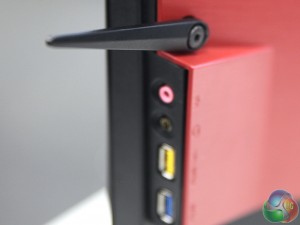
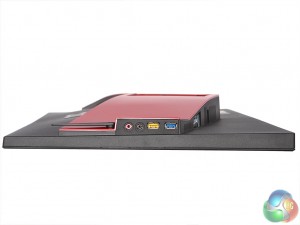
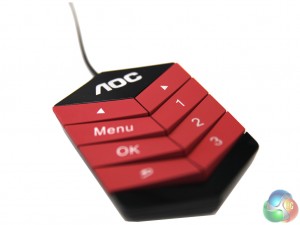
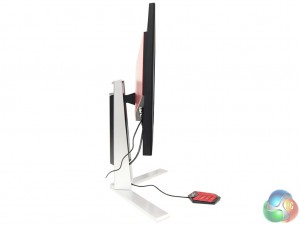

Is it any good for computer graphics? Currently i have Iiyama X2380HS and its too small. I want to change it but it looks like there is nothing on market that will fit me. Im looking for 27+ 1440p 144hz IPS and i don’t want to sell my kids for it.
Ok so, you say it’s not cheap. Can you suggest any other monitors that are 1440p and 144hz and cost less? I haven’t been able to find any, in which case, it is good value. Though sure, you can get a 27″ 1080p 60hz monitor for much less but it’s hardly comparable.
You can get the Asus MG278Q for $399.
This panel is TN
Based off of UK pricing like the article, the MG278Q is £449 on Overclockers or £419 on Amazon so it’s not cheaper.
If I ever see a “red & black” themed “gamer” item or a “red & black” themed computer build again, I’m going to vomit. Even if you actually like that color scheme, you think people would abstain just based on how played out it is…it has become a trope of the “gaming” world and it needs to be stopped
why is computer hardware cost twice as much in Britain than it does in America?
American prices don’t always include tax like ours do, plus we add import tax on products.
“it beats the latter hands down for pixel response, which is arguably more important for gamers anyway, since a difference in screen lag can mean a loss instead of a win”
You know that gamer doesn’t always mean people playing competitive shooters right…?
Can we get some proof that Nvidia now supports Adaptive-Sync as I can’t find anything on the internet to support this statement?
No. It does not. Only thing I read recently is Nvidia Fast Sync – which is a completely different thing – supported on all monitors I think. Other than that, Nvidia has not yet officially made a statement about supporting Adaptive Sync standard of VESA
Can anyone confirm that this supports VESA mount?